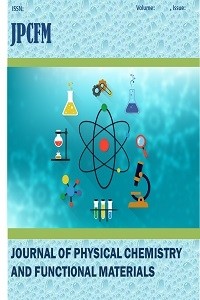MEDICAL AND BIOLOGICAL APPLICATIONS OF X-RAY FLUORESCENCE METHOD FOR ELEMENTAL ANALYSIS
MEDICAL AND BIOLOGICAL APPLICATIONS OF X-RAY FLUORESCENCE METHOD FOR ELEMENTAL ANALYSIS
XRF Microanalysis,
___
- 1- S. Akoto Bamford, D. Wegrzynek, E. Chinea-Cano, A. Markowicz, Application of X-ray fluorescence techniques for the determination of hazardous and essential trace elements in environmental and biological materials, NUKLEONIKA 2004, 49(3), 87−95.
- 2- N. V. Campos , T. A.R. Pereıra, M. F. Machado, M. B.B. Guerra, G. S. Tolentıno, J. S. Araújo, M. Q. Rezende , M. Carolına, N.A. Da Silva and C. E.G.R. Schaefer, Evaluation of micro-energy dispersive X-ray fluorescence and histochemical tests for aluminium detection in plants from High Altitude Rocky Complexes, Southeast Brazil Anais da Academia Brasileira de Ciências, 2014, 86(1), 285-296.
- 3- V.K. Singh, P.K. Rai, A.K. Pathak, D.K. Tripathi, S.C. Singh, J.P. Singh, Application of Wavelength-Dispersive X-Ray Fluorescence Spectrometry to Biological Samples, Spectroscopy, 2017, 32(7), 41–47.
- 4- M.U. Takahiro, W.T. Sugiyamab, Applications of X-ray fluorescence analysis (XRF) to dental and medical specimens, Japanese Dental Science Review, 2015, 51(1), 2-9.
- 5- J. Börjesson, S. Mattsson Medical applications of X-ray fluorescence for trace element research, Powder Diffraction, 2007, 222, 130 -138.
- 6- H. Hu, F.L Milder, and D.E Burger, The use of K X-ray fluorescence for measuring lead burden in epidemiological studies: high and low lead burdens and measurement uncertainty, Environmental Health Perspect, 1991, 94: 107–110.
- 7- B. Pemmer, A. Roschger, A. Wastl, J.G. Hofstaetter, P. Wobrauschek , R. Simon, H.W. Thaler, P. Roschger, K. Klaushofer, C. Streli, Spatial distribution of the trace elements zinc, strontium and lead in human bone tissue, Bone, 2013, 57 184–193.
- 8- M. Jaishankar, T. Tseten, N. Anbalagan, B.B. Mathew, K.N. Beeregowda, Toxicity, mechanism and health effects of some heavy metals, Interdiscip Toxicol, 2014, 7(2): 60–72.
- 9- K. Maciejewska1, Z. Drzazga, M.Kaszuba, Role of trace elements (Zn, Sr, Fe) in bone development: Energy dispersive X-ray fluorescence study of rat bone and tooth tissue, BioFactors, 425-435.
- 10- Measuring Lead Exposure in Infants, Children, and Other Sensitive Populations. BOOK, 5. Methods for Assessing Exposure to Lead.
- 11- Kidney stone analysis techniques and the role of major and trace elements on their pathogenesis: a review Biophys Rev., 2014, 6(3-4), 291–310.
- 12- Occupational and Community Exposures to Toxic Metals: Lead, Cadmium, Mercury and Arsenic. 1982, 137(6), 531–539.
- 13- L.M. Plum, L. Rink and H. Haase, The Essential Toxin: Impact of Zinc on Human Health, Int J Environ Res Public Health, 2010, 7(4), 1342–1365.
- 14- Eagle III Micro XRF: Elemental Imaging Analysis, EDAX, The Application Notebook, Sepetember 2006.
- 15- F. Cozzi, G. Grˇzini ´ c, S. Cozzutto, P. Barbieri, M. Bovenzi, G. Adami, X-Ray Spectrom. 41 (2012) 34–41.
- 16- P. M. Wróbela, S. Bałaa, M. Czyzyckia, M. Golasikc,T. Librowskic, B. Ostachowicza, W. Piekoszewskic, A. Surówkaa, M. Lankosza, Combined micro-XRF and TXRF methodology for quantitative elemental imaging of tissue samples, Talanta, 2017, 162, 654–659.
- 17- M.J. Pushie, I.J. Pickering, M. Korbas, M.J. Hackett and G.N. George, Elemental and Chemically Specific X ray Fluorescence Imaging of Biological Systems, Chemical Reviews, 8499-8541.
- ISSN: 2651-3080
- Yayın Aralığı: Yılda 2 Sayı
- Başlangıç: 2018
- Yayıncı: Niyazi BULUT
MEDICAL AND BIOLOGICAL APPLICATIONS OF X-RAY FLUORESCENCE METHOD FOR ELEMENTAL ANALYSIS
Linear Reaction of Ca Atom with HCl Molecule in the Ground Electronic State: Hartree-Fock Method
Sevil PORİKLİ DURDAĞI, Aslıhan TAŞPOLAT
Evalution of Salt Crystallisation Effects on Artificial Marble
Didem EREN SARICI, Nilgün KIZILKAYA, Engin ÖZDEMİR, Fadime POLAT
TD-DFT Study on the Toxicity Prediction of Thiopental Sodium
